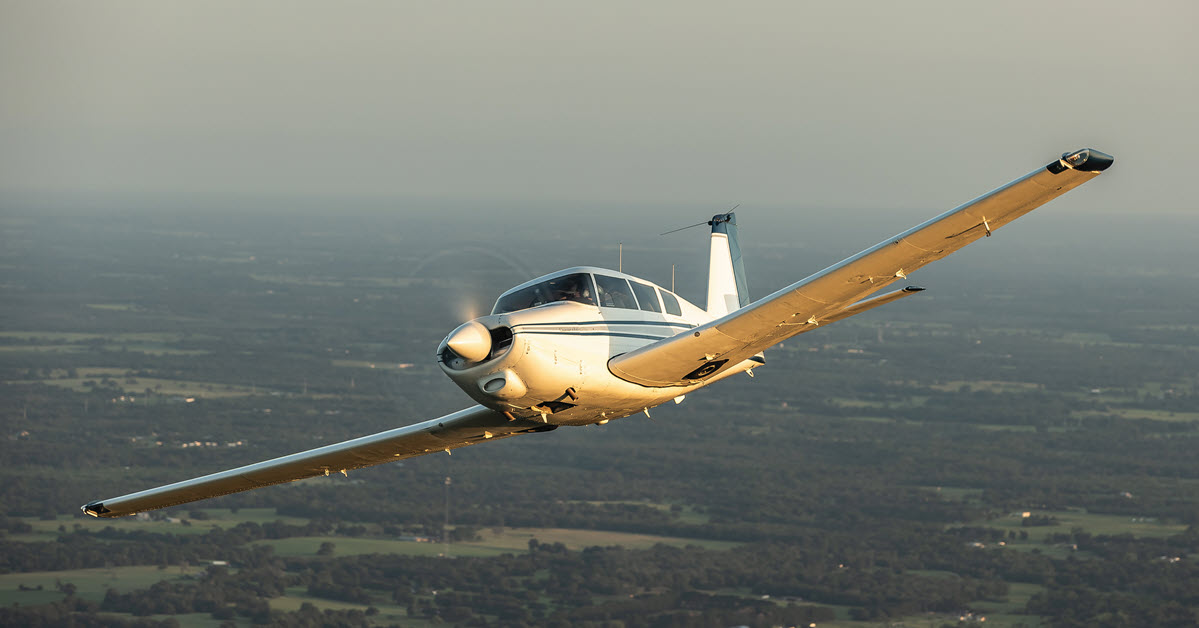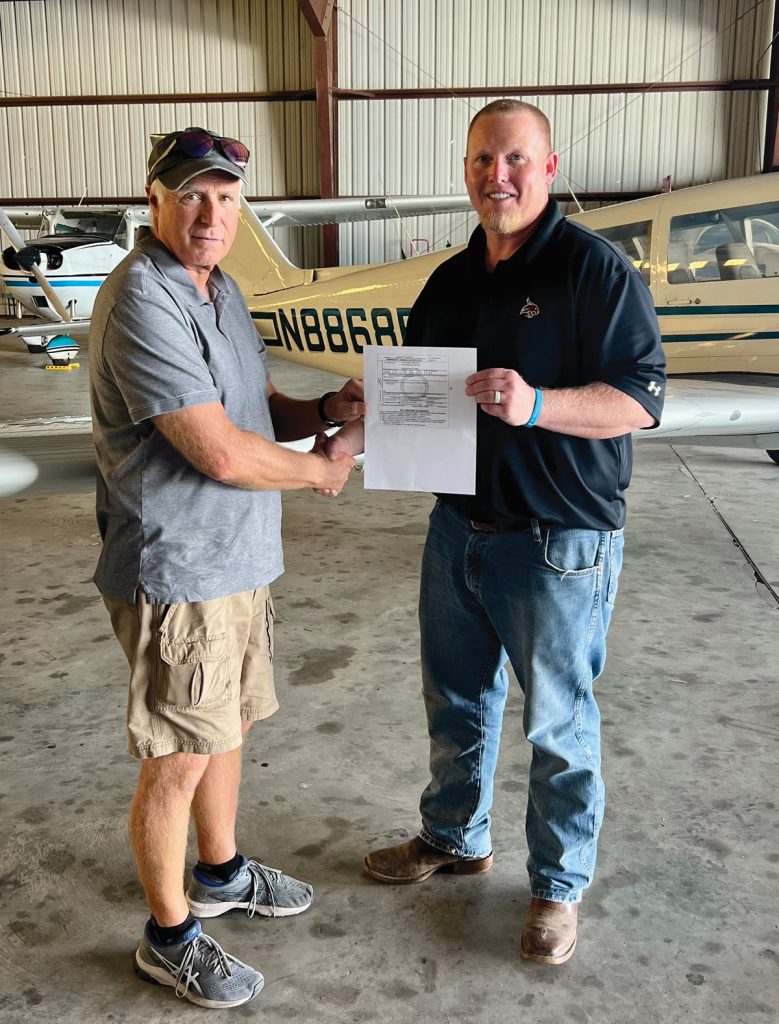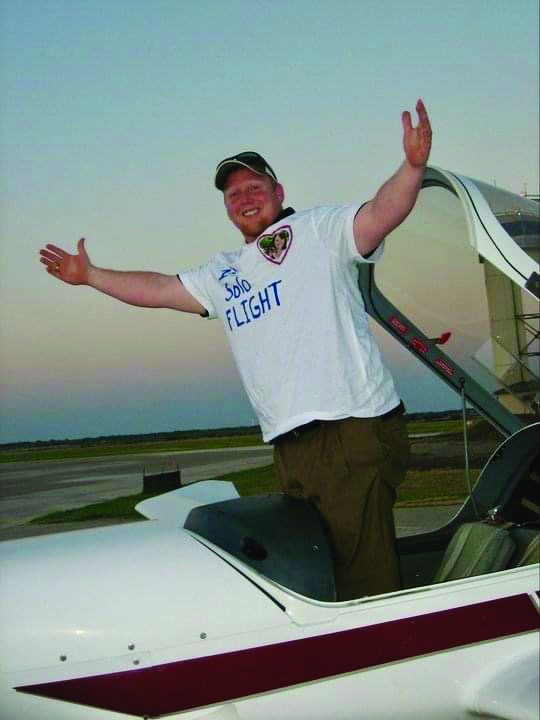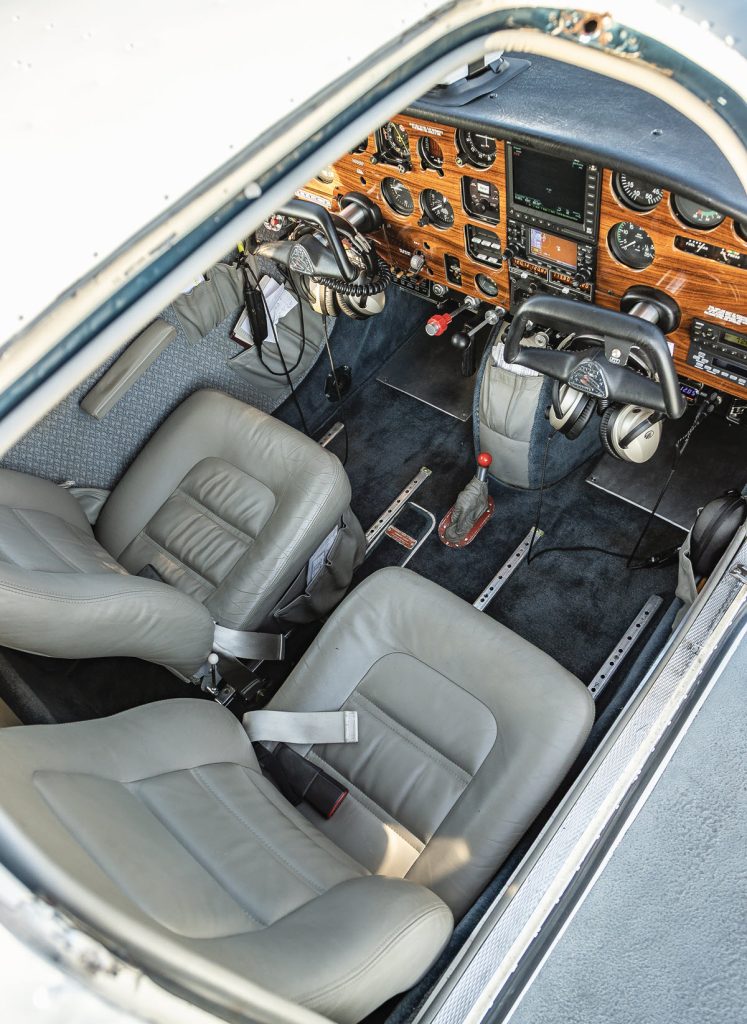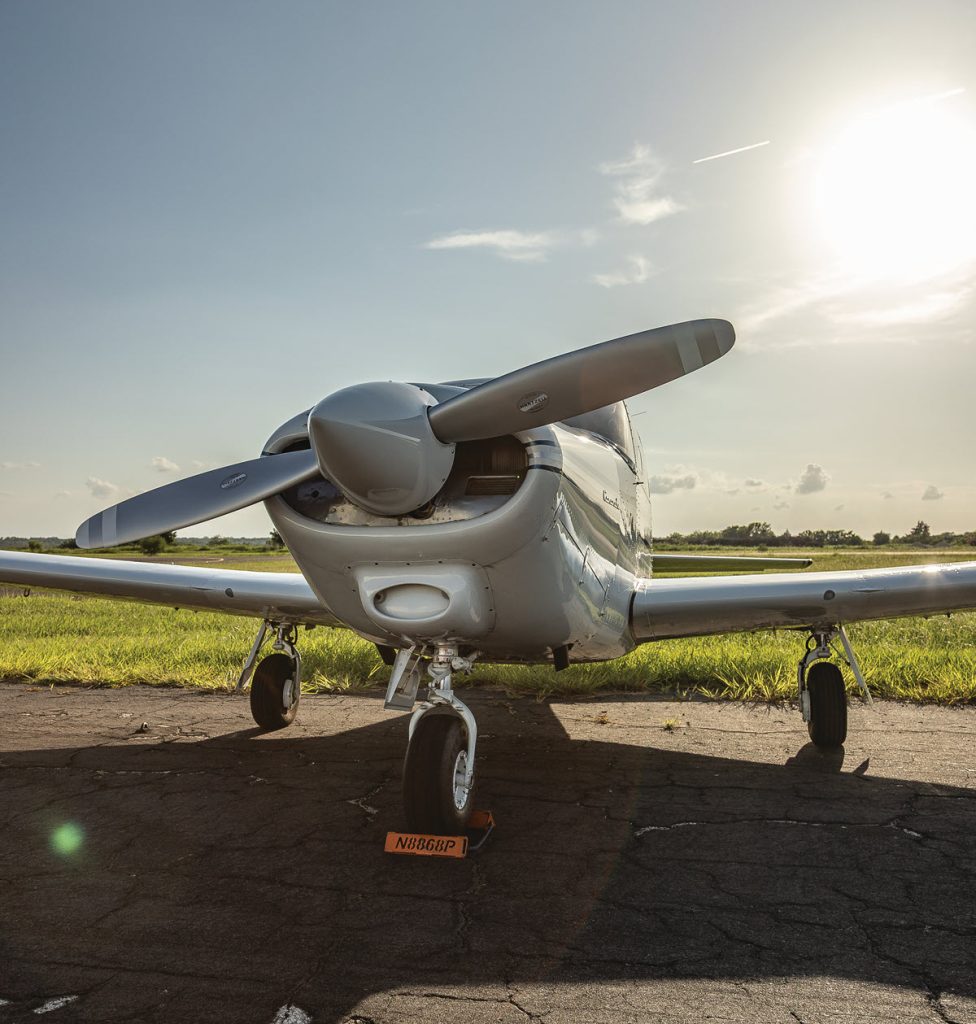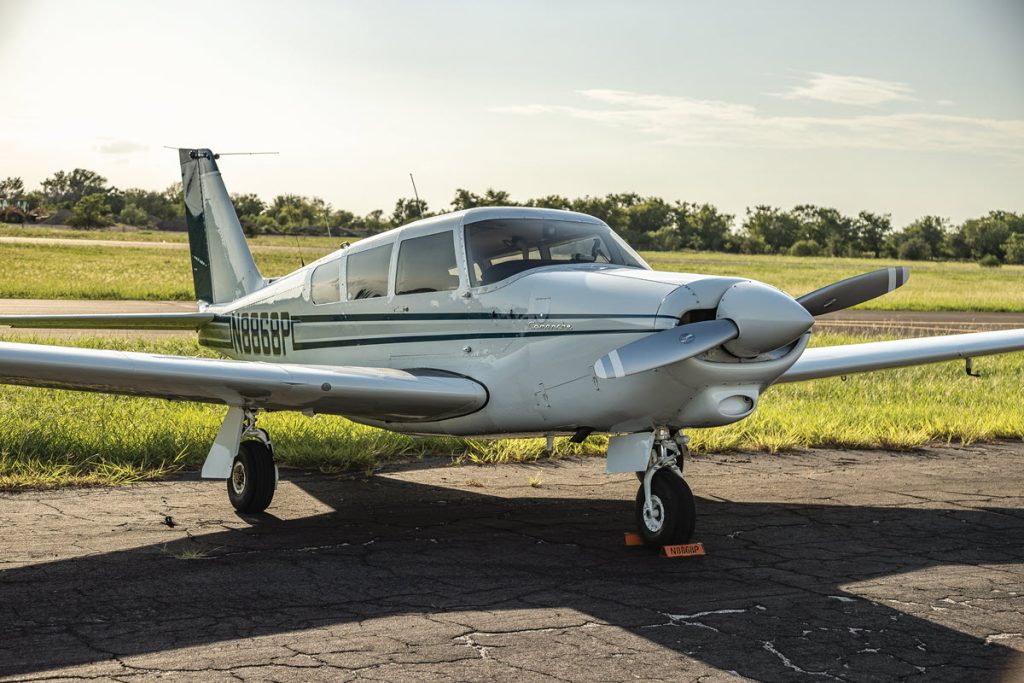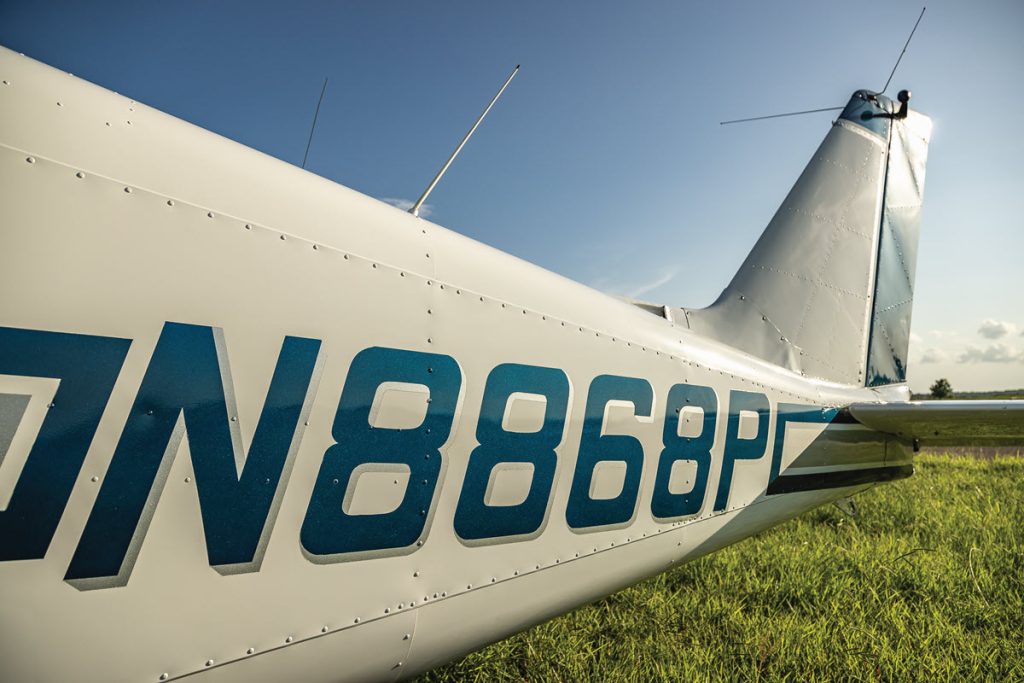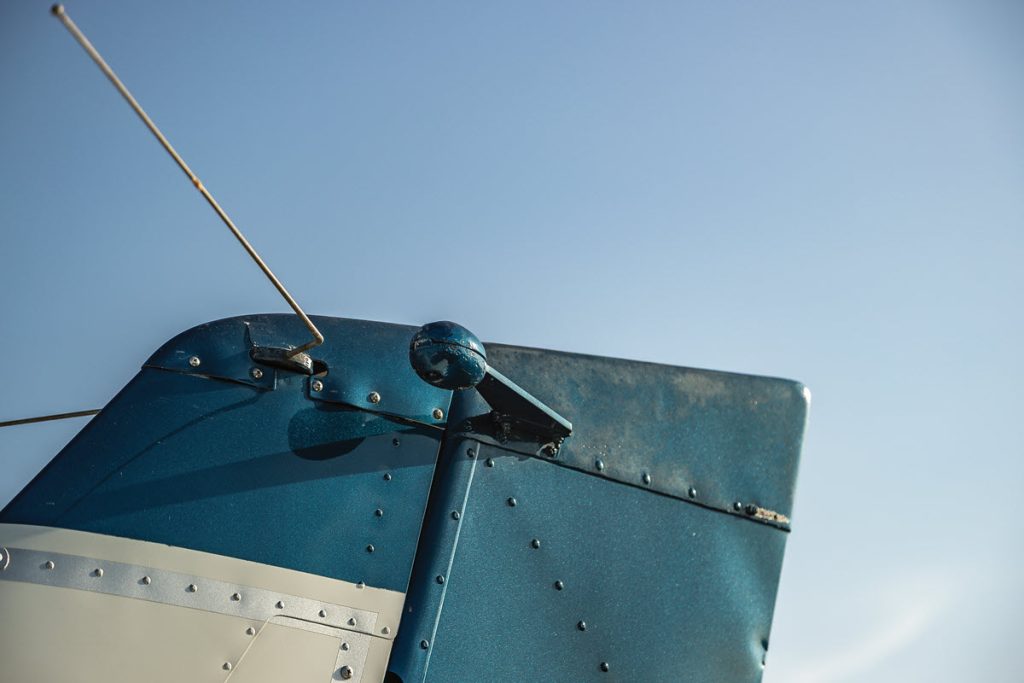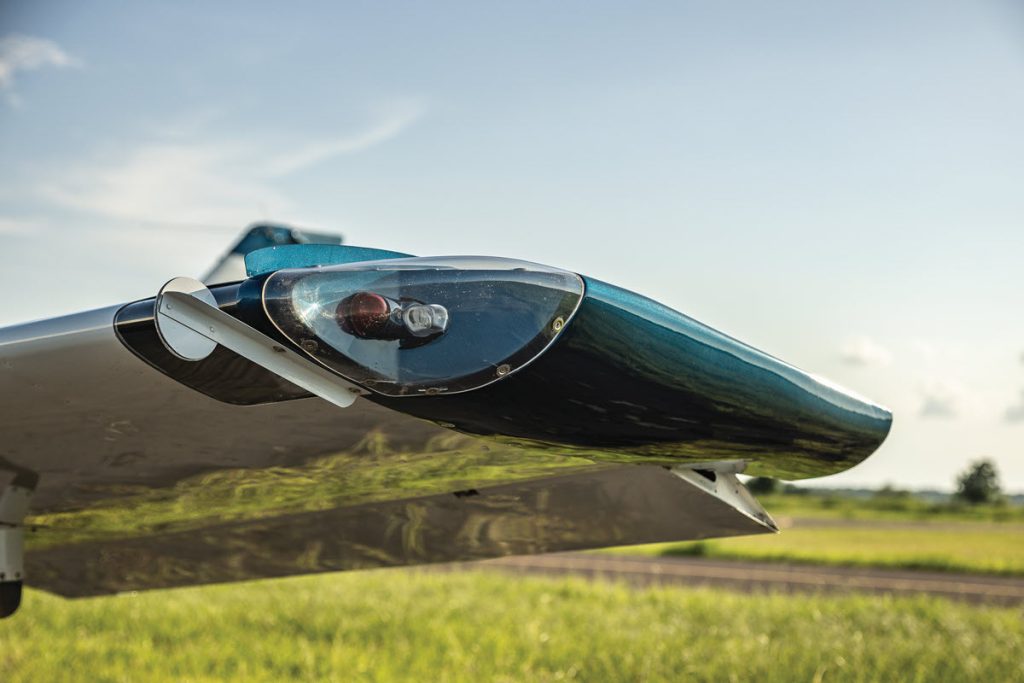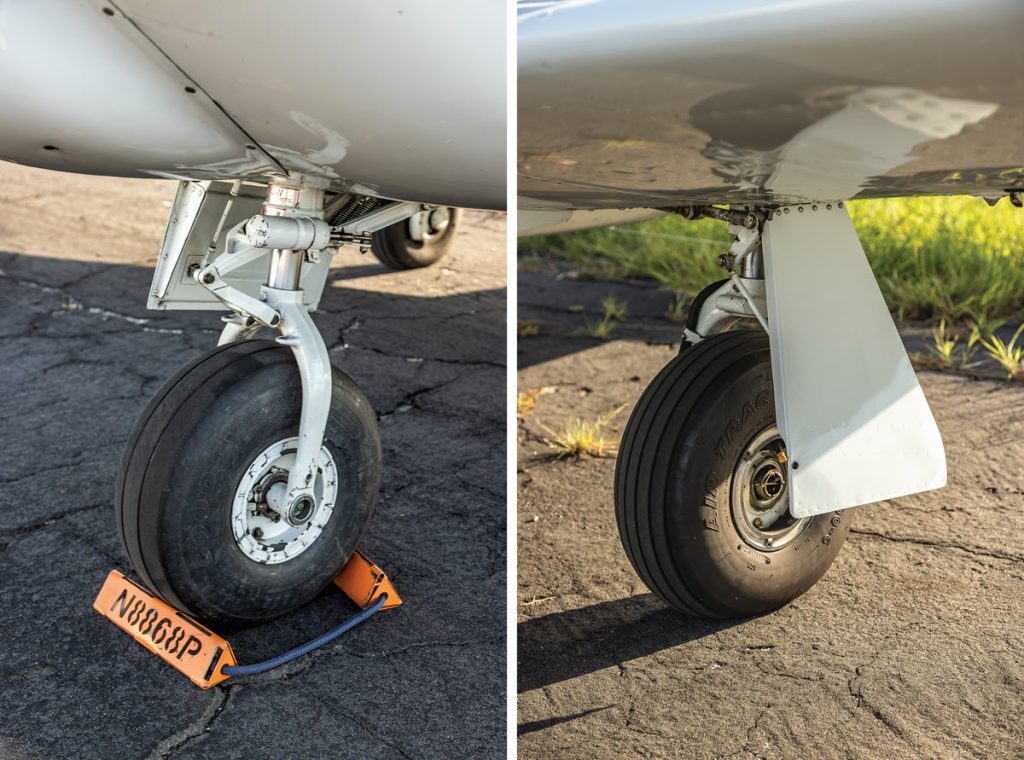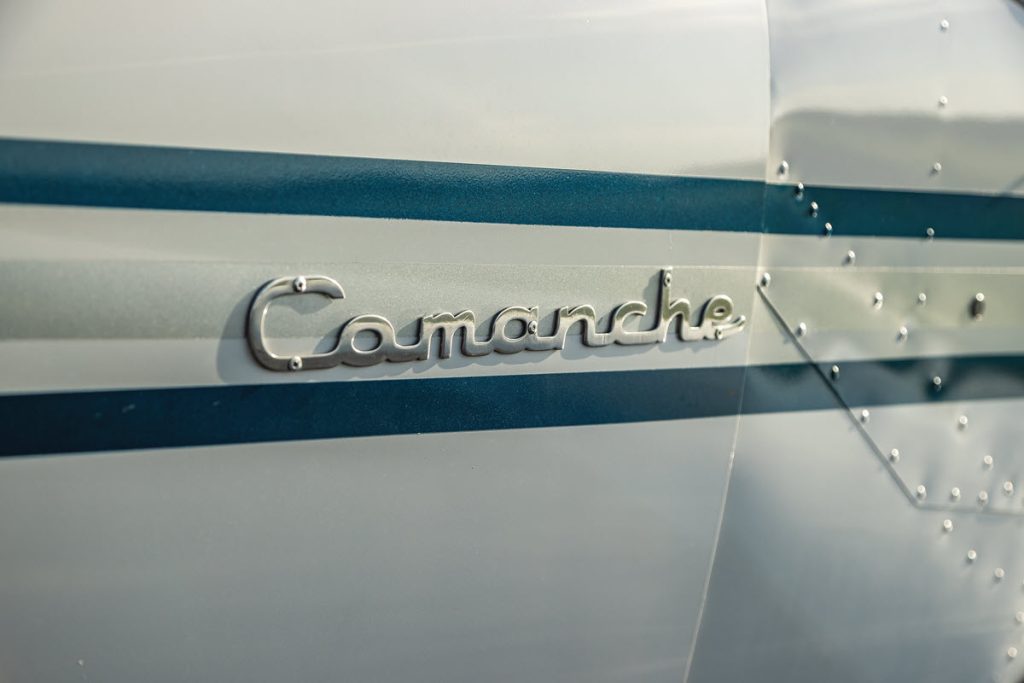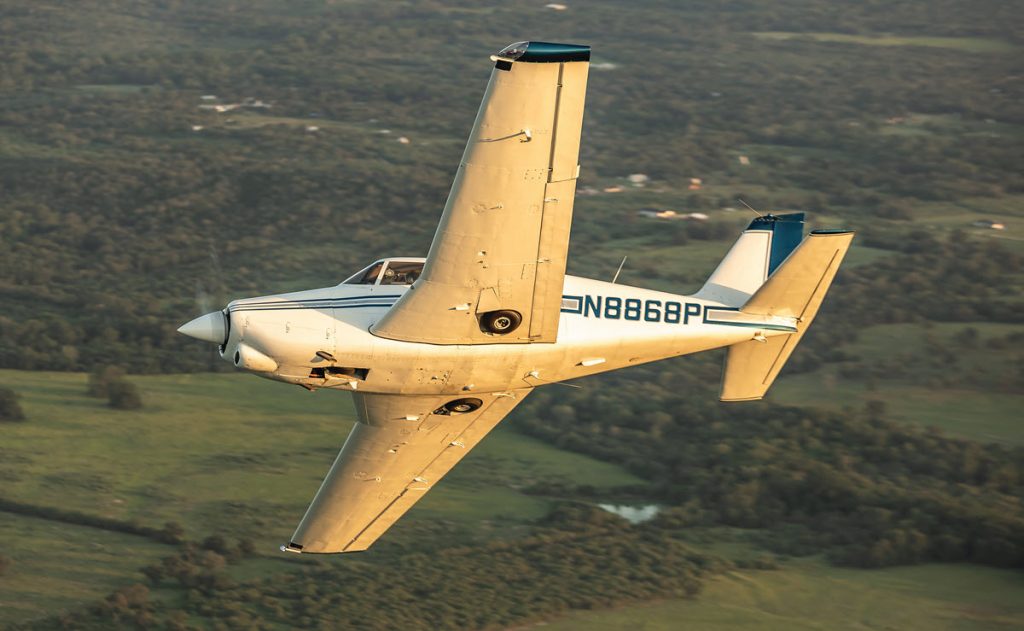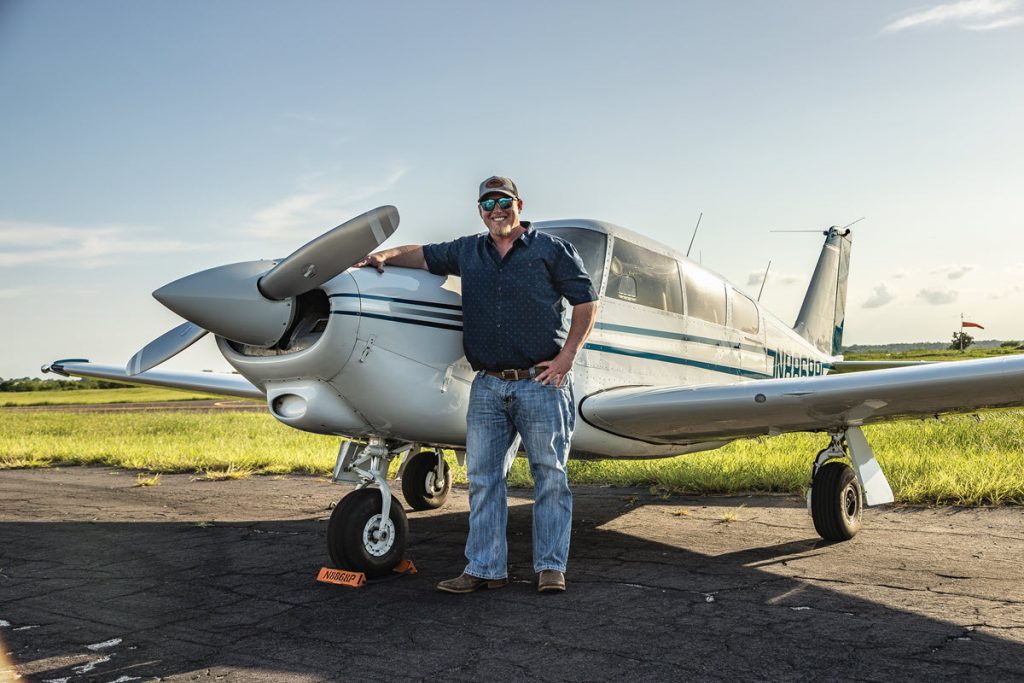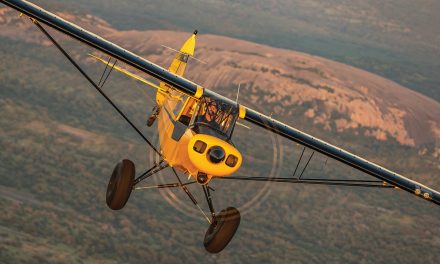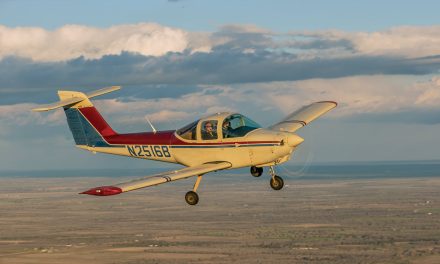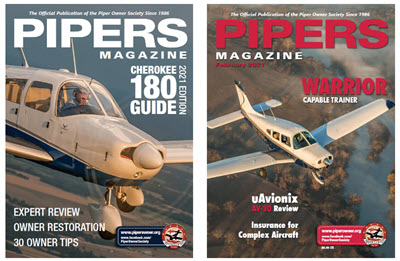By Michelle Adserias
“You passed.” Those words from Cody Burrough’s DPE (Designated Pilot Examiner), Reed Schotanus, meant Cody had fulfilled his lifelong dream to become a pilot.
Finding an instructor certified to train him in a Piper Comanche had been a bit challenging. Cody put in the effort to find someone “with the correct hours, on that specific plane — for insurance purposes.” Cody found Matthew McKeen and they worked together to make Cody’s long-time dream a reality. He completed his training and received his PPC on October 22, 2024, at Lockhart Municipal Airport in Lockhart, Texas (50R).
Now that the journey was over, he could begin making the most of his new achievement.
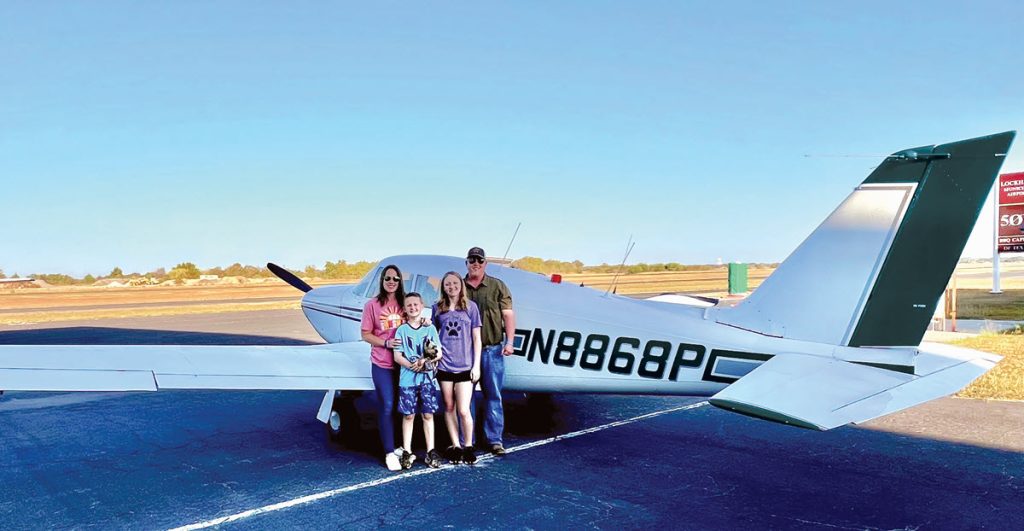
A Stuttered Start
Like many other pilots, Cody was captivated by the idea of flying since he was a youngster watching airplanes fly overhead in his childhood town of Rockdale. He didn’t have access to an aircraft or flight lessons until after he completed his Master of Science in Physical Therapy at Texas State University.
Cody started flight lessons and completed his first solo flight in 2011 in a Diamond DA20. Then he found out he was going to be a father. He put his plans on hold to devote time and finances to raising his daughter, Bailey.
Over the years, Cody kept looking up when aircraft flew overhead, knowing he would finish what he started when the time was right. His decision to return to the pilot’s seat was fueled by his daughter, who was then 13. Her best friend was from a long line of aviators.
Cody started by researching and asking local pilots about their experiences, in order to determine which type of airplane he was interested in flying. He set his sights on a Piper Comanche 260B for several reasons. The fuel burn made it efficient for both business and personal travel, the useful load lent itself to family trips close to home and across the country, and he felt as though it made the world a little smaller and easier to explore.
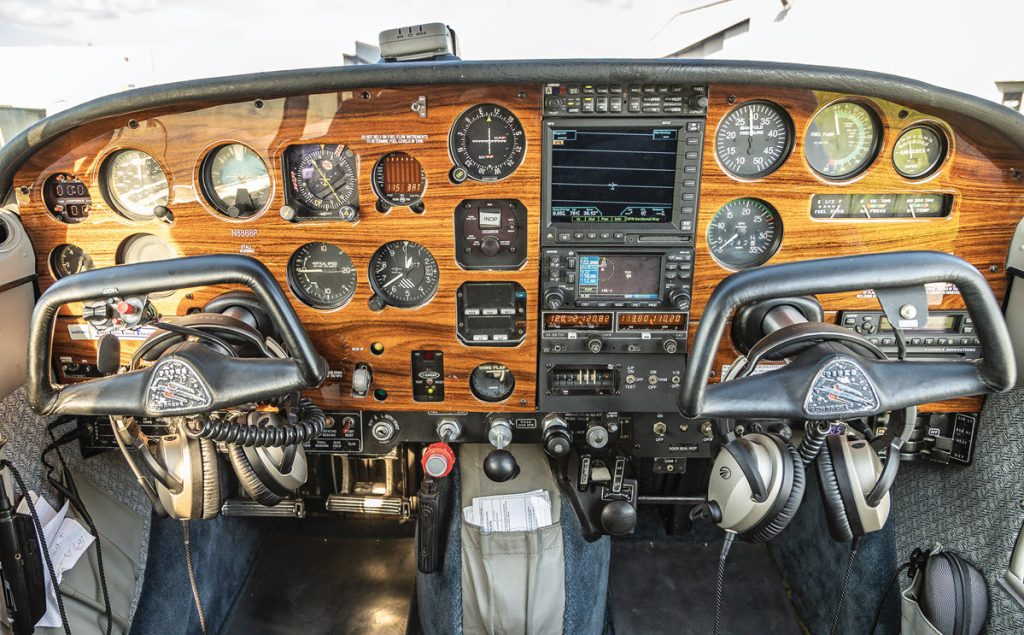
Shortly after he started training, Cody’s wife, Leanne, discovered there was a Piper Comanche at Kestrel Airpark (K1T7) in Spring Branch, Texas, 45 minutes from their home. It just happened that the owner, Mike Foster, was a friend of a friend. They were able to arrange a visit so Cody could see whether it was everything he hoped for.
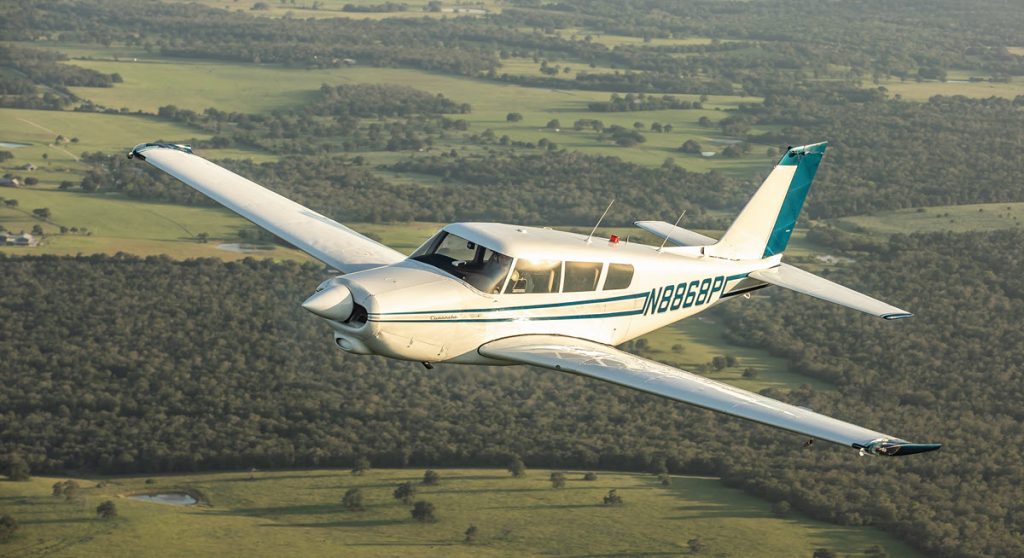
Cody was not disappointed. The 1966 Piper PA-24 Comanche 260B (N8868P) was “extremely well taken care of and loved by its previous owner. It was ready to fly!” As they talked about the aircraft together, Cody and Mike discussed the adventures the plane had already had and Cody’s hopes for the plane he would someday own in the future. All this was done with a clear understanding between the two men that the Comanche was not for sale.
About three weeks later, Mike had a change of heart. He offered to sell N8868P to Cody. He wanted the airplane to go to a good home where it would be well-loved, continuing its legacy of care and travel. Cody was confident this airplane’s history would make it an ideal choice for safely traveling with his family. And since this was the airplane he would be flying with his family, he completed all of his training and his check ride in it.
Maintenance and Upgrades
Because N8868P had been carefully maintained, Cody has not faced many repairs or upgrades since purchasing it. However, a few issues did come up at its annual inspection that needed to be addressed. There was a crack on the main gear trunnions, so both main landing gear trunnions were replaced. The prop hub was also replaced since there was a crack in that, as well. These discoveries and repairs gave Cody peace of mind “to know we are flying a safe aircraft.” He and his son, Blake, also really enjoy spending time together cleaning, waxing, and maintaining N8868P and making it shine.
Cody has also replaced the electric and engine-driven fuel pumps and added GAMI (General Aviation Modifications, Inc.) injectors. The stabilator horn (Aussie Horn) had been checked for cracks and corrosion, and was replaced, before Cody purchased it — which satisfied a crucial airworthiness directive for the Comanche.
The next thing that will probably need new life breathed into it is the engine, which will need an overhaul within the next few years.
There are some changes under consideration for the future. Cody is torn between upgrading the avionics to include some of the “bells and whistles” more modern technology would afford him or maintaining the vintage, nostalgic look of the panel. He hasn’t decided which route to go yet.
The other possible upgrade would be adding portable oxygen for those long, high flights.
Locating necessary parts has not been a problem. Cody has found Webco Aircraft very reliable for quick parts availability on most of the items he needs but also turns to Aircraft Spruce from time to time.
The bigger struggle for Cody is finding mechanics who are qualified to do repairs on the Comanche; ones who are affordable and available within a reasonable timeframe. Qualified mechanics are usually booked several months in advance in his area.
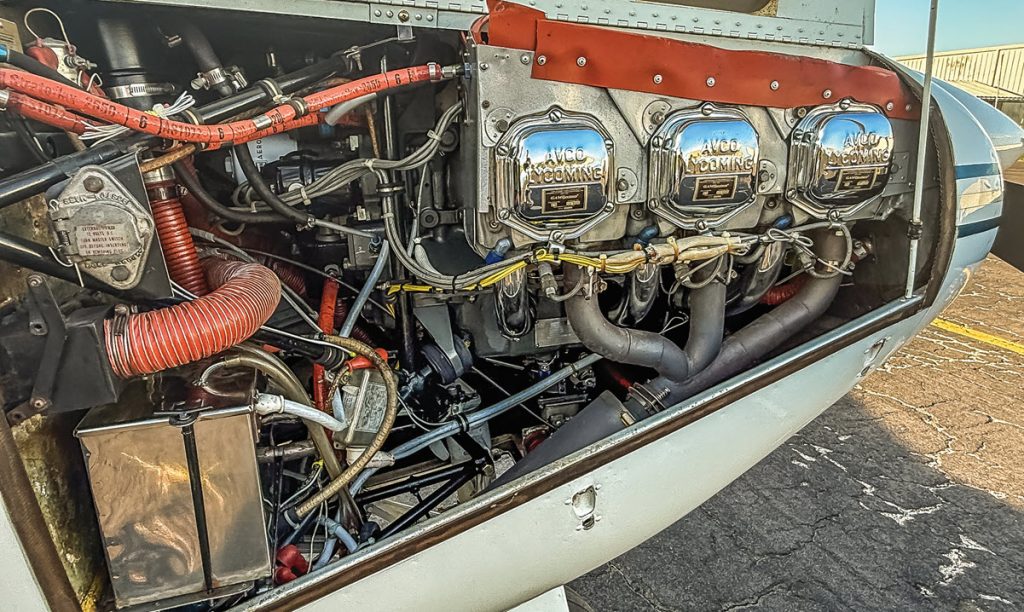
Piper Comanche Pros and Cons
Overall, Cody is very satisfied with his Comanche. “It was made to fly!” he said. N8868P is a sharp-looking aircraft that turns heads wherever it goes. It’s also maneuverable and efficient, burning 10.5-12 gallons per hour. Plus, it’s comfortable, not only on those quick trips to area destinations like Galveston, Port Aransas and Fredericksburg, but also on longer journeys, like the one Cody and his family took to the Great Smoky Mountains this past June.
“Whether packing bags for an 1800-mile round trip family vacation to Tennessee or a 45-minute day trip to the beach, the useful load and fuel burn make either trip a breeze and allow the freedom to travel and live life to the fullest.”
Even the best aircraft have their shortcomings. When asked what he would change about his Comanche if he could, Cody replied, “Would I even be from Texas if I didn’t say air conditioning?” Anyone from a hot weather climate can appreciate how uncomfortable the cockpit can be on a blazing summer day. Air conditioning would be a plus!
Cody noted two other small problems he’s run into. The oil flap on the cowling pops open at high speeds, which he believes could have been prevented by changing the direction of that flap in the original design, and warm starts can be challenging at times.
The journey Cody’s family is on with their Piper Comanche has just begun. They look forward to the adventures that lay ahead. But one of the best flights will always be the initial trip home after purchasing N8868P. Cody flew with his friend Andy Fay serving as PIC. He was filled with great satisfaction “knowing it was our plane!”
“At the end of the day, I’m deeply aware that a great deal of history had to align—and many sacrifices had to be made—to grant private pilots the freedom and responsibility we’re privileged to carry today. That legacy is not lost on me. I’m proud and honored to be part of this, and to do my part in keeping general aviation alive and thriving—for the next generation of dreamers looking to the skies.”
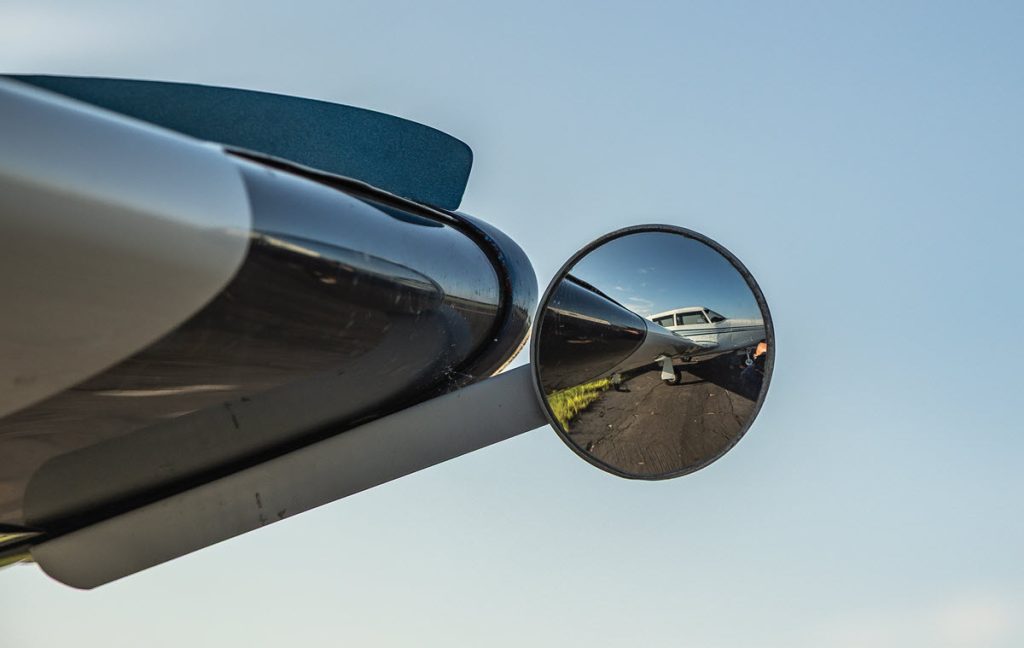
THE PIPER COMANCHE 260B
This line of aircraft debuted in 1958, moving Piper into the modern era of aviation — away from their tube and fabric designs into all-metal planes. The Comanches featured laminar-flow wings, retractable landing gear, stabilators and a notably more comfortable interior.
Two different models were introduced at that time: the 180 (equipped with a Lycoming O-360 engine) and the 250 (equipped with a Lycoming O-540 engine). Since the 250 sold for only $4,000 more than the 180, it was a big seller. It was, from the onset, valued for its maneuverability, economy, and comfort. Although production of these two models was halted in 1964, that was not the end of the Piper Comanche.
The Comanche 260 replaced the 250 in 1966 and offered some improvements over its predecessor, particularly the 260B. It had a better propeller, a higher-performing, fuel-injected engine, three windows per side (as opposed to two) and the option of adding two additional seats to accommodate six people. Piper ceased production of all Comanches in 1972.
Have a website login already? Log in and start reading now.
Never created a website login before? Find your Customer Number (it’s on your mailing label) and register here.
JOIN HERE
Still have questions? Contact us here.

